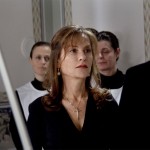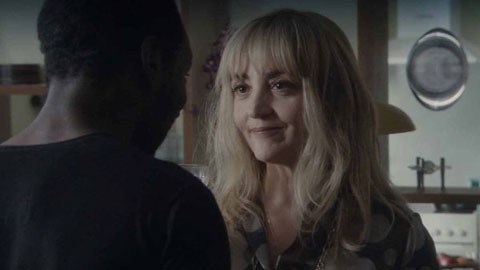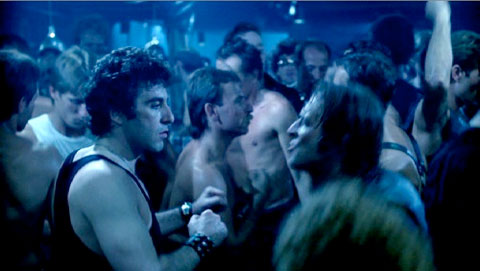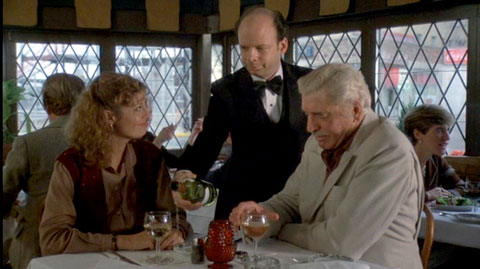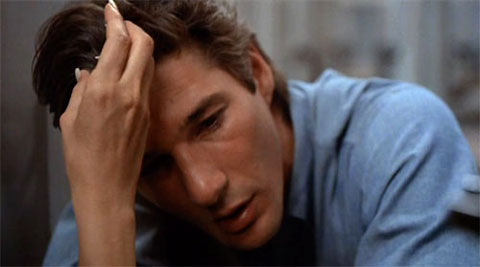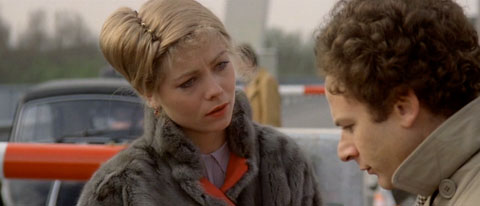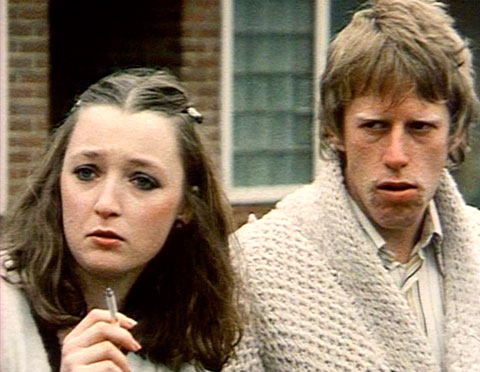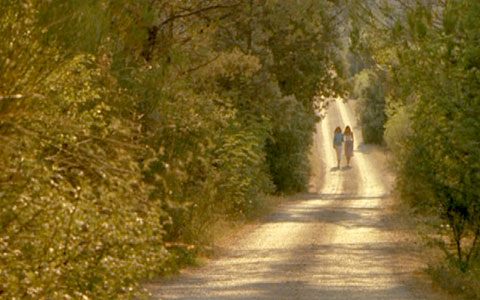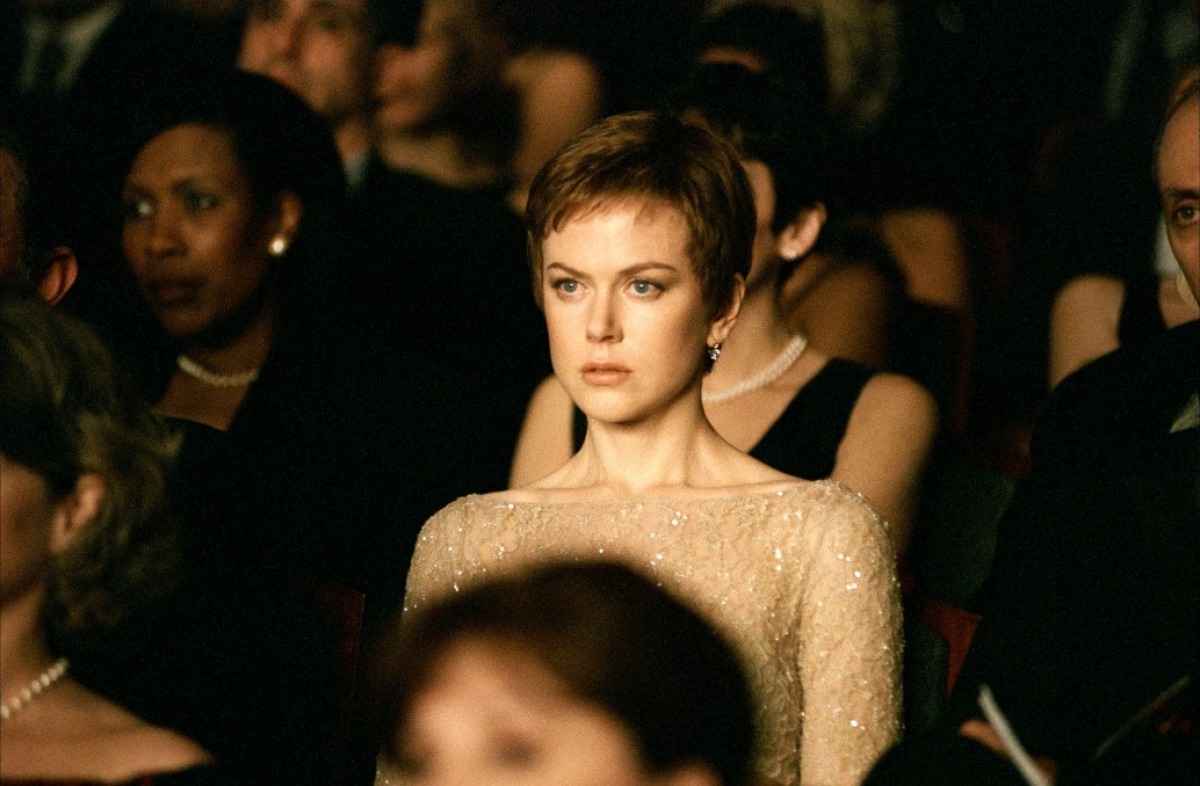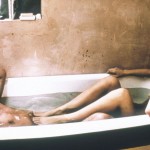Dormant Beauty
Dir. by Marco Bellocchio
Inspired by the case of Eluana Englaro, an Italian woman who spent seventeen years in a vegetative state and ignited a national cause célèbre, Dormant Beauty tackles the subject of euthanasia by weaving together four stories. In the first, a Senator (Tony Servillo) with first-hand experience of the issue prepares to cast a vote that pits his conscience against his party. Meanwhile, his daughter (Alba Rohrwacher), while participating in pro-life demonstrations, falls for a man whose emotionally-troubled brother is arrested while protesting for the right to die. In the third story, a beautiful drug addict (Maya Sansa) with suicidal tendencies is nursed back to life — perhaps in more ways than one — by a handsome doctor (Pier Giorgio Bellocchio). And, finally, a famous actress (Isabelle Huppert) abandons her career, becomes a recluse, and dedicates her life to caring for her comatose daughter and praying to God for a miracle.
As that summary should suggest, Dormant Beauty is in many respects standard, made-for-TV fare. The script hits every predictable beat. When two characters argue, each actor waits patiently for the other to finish his or her line before responding. Huppert’s devout Catholic whispers on-the-nose lines like, “I can’t hope Rosa wakes up unless I have innocence — unless I have faith.” And yet Bellocchio makes it so much damn fun to watch, especially the story line involving the Senator, which he turns into a Juvenalian satire of politics in a media age. Nearly every shot catches a glimpse of a TV screen in the background that is tuned to coverage of the vote, including several scenes set in the bizarre underworld of the legislative baths, where naked Senators consult with a mephistophelean character known only as Lo psichiatra (The Psychiatrist), who offers political advice and anti-depressants by the handful. I especially like one shot near the end, when Senators come rushing through a door after a vote and by some trick of the camera (a really long lens that flattens depth?), the Senate chamber appears to have been replaced completely by a pixelated video monitor. Dormant Beauty is a bit of a disappointment after Bellocchio’s previous film, the excellent Vincere (2009) — it loses momentum each time Belocchio cuts away from the Senator and his daughter — but its best moments were some of the most exciting of the festival.
Something in the Air
Dir. by Olivier Assayas
Set three years after May ’68 and loosely inspired by Assayas’s own political and artistic coming-of-age, Something in the Air follows seventeen-year-old Gilles (Clement Metayer) from his first direct action in the student movement to a sojourn through Italy to his eventual return to Paris, where he studies art and apprentices under his father in the commercial movie business while attending programs of experimental films at night. Something in the Air offers an interesting point of comparison with Dormant Beauty. In both cases, the writer-directors produced fairly banal scripts, but whereas Belocchio frequently generates new and exciting images from the material, Assayas’s direction is strangely anonymous and unremarkable. For a film about beautiful young people discovering sex, drugs, rock-n-roll, and revolution, Something in the Air is inert and humorless. Boring, even.
I did enjoy, however, some of the ironies built into Assayas’s backward glance. Something in the Air tackles a relatively un-sexy moment in the history of the Left and its heroes are refreshingly unheroic. More radicalism tourist than party soldier, Gilles is chastised in one scene by older revolutionaries for believing the reports of bodies washing up in Maoist China. And poor Christine (Lola Créton) abandons Gilles for a group of revolutionary filmmakers only to end up answering telephones and washing their dishes. Assayas’s version of the post-’68 Left is more than a bit sexist, and the concurrent rise of second-wave feminism is felt in the film — intentionally and ironically, I think — by its absence.
Berberian Sound Studio
Dir. by Peter Strickland
Apparently I should have written about Berbarian Sound Studio while I was still in Toronto, because two weeks later I can barely remember it. My notes aren’t very helpful, either. The film opens with extreme closeups of analog sound equipment. Instead of opening titles for Berbarian Sound Studio, we see a fun, throw-back, animated credit sequence for The Equestrian Vortex, the low-budget horror film whose soundtrack Gilderoy (Toby Jones) has traveled to Italy to mix. And there is a dream sequence that was apparently impressive in some way. Thus ends my notes. (I average three pages per film at TIFF.)
In a way, Berbarian Sound Studio is similar to Tower. Both are simple character studies that conform strictly to a set of internal rules. Here, Strickland limits his entire film to two locations, the studio and Gilderoy’s rented apartment, and likewise limits the camera’s perspective to Gilderoy’s increasingly unhinged point of view. The premise is enjoyable enough for forty minutes or so — I’m a sucker for films about filmmaking — but I was genuinely surprised when the closing titles started to run. I was still waiting for the plot to develop into . . . something. I suspect fans of Berbarian Sound Studio will enjoy debating which parts of the film actually happen and which parts exist only in Gilderoy’s mind. These types of questions are, I think, among the least interesting to ask of a film, and in this case I honestly don’t care.
Nights with Theodore
Dir. by Sébastien Betbeder
Nights with Theodore is one of several oddly shaped films I saw at TIFF. The folding of the Visions program into Wavelengths allowed for more double features that paired, say, a 55-minute “feature” with a 30-minute “short.” Their schedule-unfriendly running times make films like this difficult to program, so I was encouraged to see more of them in the lineup this year. Most of my favorite films at the fest fall somewhere in this category. One pleasure of a 67-minute film like Theodore is that it necessarily breaks convention in the most fundamental way. As seasoned film watchers, we’re familiar, deep in our muscle memory, with 85- to 120-minute run times and predictable act breaks. (Peter Watkins, of course, has a thing or two to say about this.) I feel time differently, more consciously, when I watch a film like this because the shape of the narrative is rare and peculiar.
In the case of Theodore, this unmoored-from-convention quality is essential to its success. A fragile nocturne of a film, it imagines the Parc des Buttes-Chaumont in Paris as a fairy-tale wonderland pulsing with occult power. Betbeder cuts throughout the film between the main storyline — Theodore (Pio Marmaï) and Anna (Agathe Bonitzer) are young lovers who leap the fence of the Buttes-Chaumont night after night, irresistibly — and documentary material about the park itself. The film opens with archival maps, photographs, and film clips and with a brief history of the park’s founding. We see video footage of the park during the day time when it’s teeming with joggers, tourists, and picnickers. And Betbeder also include a brief interview with an environmental psychiatrist who recounts the story (truth or fiction?) of a man whose bouts with depression corresponded directly with his proximity to the park. I’d like to see Theodore again before declaring whether all of the pieces fit together to offer anything more than an impressionistic portrait of a place transformed by history, imagination, and obsessive love. Regardless, I’m eager to see what Betbeder does next.
The Last Time I Saw Macao
Dir. by João Pedro Rodrigues and João Rui Guerra da Mata
Equal parts city symphony, essay, film noir, and home movie, The Last Time I Saw Macao is fascinating conceptually but a bit of a mess. Compiled from hours and hours of video shot over many months and on multiple trips to Macao, the film began as a documentary; it was only during editing that Rodriguez and Guerra da Mata stumbled upon the ultimate form of the project. Inspired by Joseph von Sternberg’s Macao (1952) and other Western, exoticized representations of the Orient, the co-directors scripted a B-movie intrigue involving an on-the-run beauty named Candy, a violent crime syndicate, and a much-sought-after, Kiss Me Deadly-like bird cage and then superimposed the drama onto the documentary footage by means of a voiceover and fiction-creating soundtrack. It’s a wonderful idea. Suddenly a random stranger pacing the street and talking on his cell phone becomes a side player waiting for a clandestine meeting. With the addition of gunshot sounds, a couple shutting down their storefront for the night become the latest victims in a gang war.
Guerra da Mata described The Last Time I Saw Macao as a “fiction contaminated by memory,” and, indeed, “fiction” and “memory” are almost interchangeable here. Guerra da Mata spent much of his childhood in Macao. We hear his voice. The unseen hero of the film has his name. We see him as a child in old family photos. And I wonder if that might account for the uneven tone and pacing of the film. It’s not by coincidence that Candy lives on Saudade Road. (Saudade might be imperfectly translated as a kind of a deep and pleasantly painful longing for something lost and never to return.)
The ideas at play in this film are almost too numerous to count: the political and economic consequences of China’s takeover of Macao in 1999, the complex legacies of Portuguese colonialism, the queering of glamor and a critique of Western notions of Asian sexuality (I haven’t even mentioned the opening sequence, which turns the classic femme fatale song and dance number, like Jane Russell’s from the original Macao, into a beautiful, campy drag show). But The Last Time I Saw Macao fails, finally, to shape them into anything satisfyingly coherent. It was telling, I think, that Rodriguez and Guerra da Mata invited their editor on stage for the Q&A. The noir idea could sustain an hour. The documentary images of Macao could as well. But Guerra de Mata’s saudade — what should be at the heart of the film — is described but too seldom felt.
